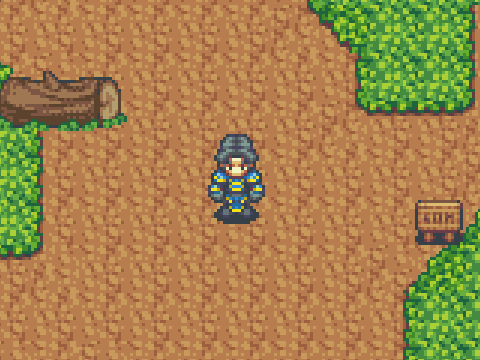Fantasy Sphere RPG Devlog 1
Tools, Graphics, Map Loading And Collisions
Few days ago I have decided to start an RPG project, as that’s what I’ve always wanted to make. I will be fairly limited with graphic assets and time, but at least the coding part will be fun. I will make do with what I have available.
Right now I have depth sorting implemented:

I’m using Time Fantasy art assets.
Tiled for level editor.
Haxe as programming language.
Phaser 3 as framework.
Coffee as fuel.
So far I’ve went through map loading (surprisingly simple in Phaser 3), animations based on keyboard input and basic collisions using Phaser’s Arcade.
Then I switched to using Differ for collisions, because Phaser’s Arcade physics couldn’t handle custom shapes per tile by default. Given that I expect more requirements from the collisions/physics system, I like having more control over things instead of letting Phaser handle it all for me.
After that, it was time to refactor all the code, because it was getting messy. I choosed to use ECS architecture, because I used it before and I find it very nice for these kind of games. Especially considering how big the game might grow, it’s important to keep the code clean. I was deciding between using Elias Ku’s ECX library and Kevin Leung’s ECS. Ultimately it probably doesn’t matter, but I chose Kevin’s.
At this point the ECS consists of RenderSyncer, KeyboardInput, Movement, PhysicsDebugDraw, PhysicsSystem systems, and Velocity, ActorState, DifferShape, InputControllable, Position, Renderable, StaticCollidable components. This will change a lot as the work continues.
Next I made a custom preprocessor for Tiled level files. I’m converting them to custom JSON that contains only the data I need, in format the game expects. This also allows for making rudimentary checks against typos and missing data. It also means I’m no longer using Phaser’s tilemap loader, and instead had to write a bit of code to populate the tilemaps myself. While this is some extra work, it allows for special handling.
Last thing I did was implement depth sorting. Phaser can’t render different tiles at different depth, or allow you to insert something (like a moving character) in between tiles. If you look at the GIF on top, you see the character can move behind and in front of the tree log and the sign board. If they were part of a Phaser’s tilemap layer, it wouldn’t work. Instead, I mark the layer in Tiled as requiring depth sorting, and the game then creates individual depth sorted sprites. This way I didn’t have to change the level editing workflow and won’t need to manually handle future similar cases.
Next I plan to work on some UI, changing location (loading different maps, like insides of a building), NPCs and interaction, and combat system.
Subscribe
Get Fantasy Sphere RPG Development Newsletter directly to your email.
